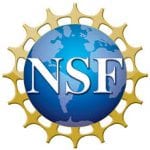Multi-scale investigation of actin biomechanics and mechanobiology

Thermally fluctuating filament in crowded conditions
(Source: Castaneda et al. (2019) J. Phys. Chem. B)
The self-assembly of protein actin into semi-flexible double helical filaments and bundles or networks drives many important cellular processes, which take place in a crowded and confined cytoplasm. Despite increased appreciation of macromolecular crowding effects, it is not well understood how crowded intracellular environments, along with altering ionic and osmotic conditions, modulate cytoskeletal filament mechanics and structure.
We aim to 1) determine how mechanics and conformations of actin filaments and crosslinked bundles are modulated in crowded environments at the nanoscale, 2) evaluate filament assembly dynamics and interactions with actin crosslinking proteins in crowded environments, and 3) determine how actin cytoskeleton responds to geometric constraints, mechanical forces, and cellular environmental factors, in addition to osmotic stress. By combining molecular biophysics and nanoscale characterization, our work will transform the understanding of cell physiology and disease states in terms of the mechanisms that control the physicochemical, mechanical, and structural properties of actin cytoskeleton.


